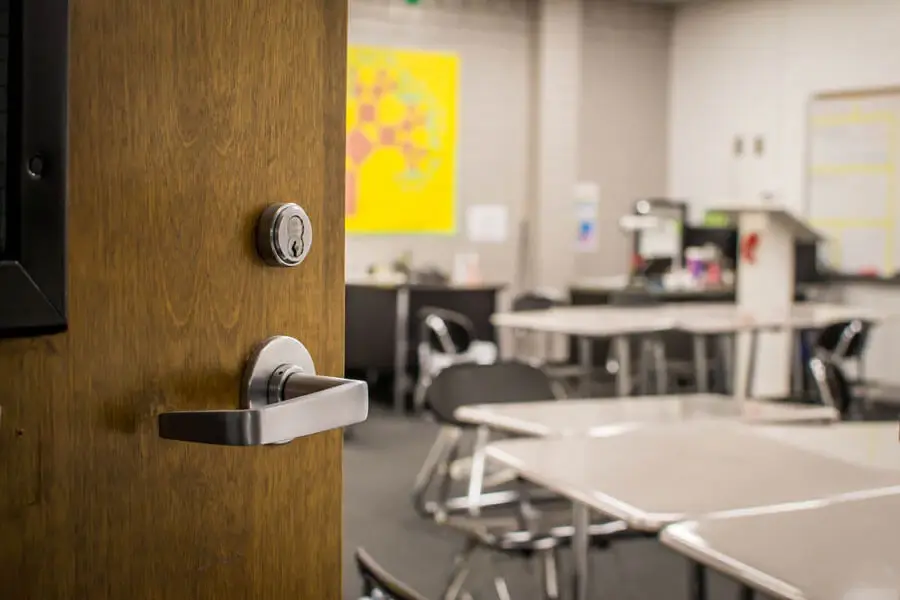Doors are essential to any classroom environment, serving multiple purposes beyond merely allowing entry and exit. From ensuring safety and security to facilitating effective teaching and learning, doors play a crucial role in creating a conducive educational space. In this article, we’ll explore the importance of doors in classrooms, examining their functions and their impact on students, teachers, and the learning environment.
Safety and Security:

One of the primary functions of classroom doors is to provide safety and security for students and staff. In an emergency such as a fire, lockdown, or other threat, doors serve as a barrier to protect occupants and prevent unauthorized access to the classroom. Properly designed and maintained doors equipped with sturdy locks, hinges, and latches enhance the overall security of the classroom environment and contribute to emergency preparedness protocols.
Privacy and Concentration:
Doors also contribute to privacy and concentration within the classroom, creating a boundary between the learning space and external distractions. When closed, doors help minimize noise from adjacent areas, providing a quieter environment conducive to focused learning and concentration. This is particularly important during activities such as exams, assessments, or group discussions, where students require minimal distractions to perform at their best.
Controlled Access:
Classroom doors allow for controlled access to the learning environment, enabling teachers to manage the flow of students and visitors in and out of the classroom as needed. By regulating entry and exit points, teachers can maintain order and ensure the safety and security of all occupants. Controlled access also facilitates attendance taking, monitoring of tardiness, and supervision of classroom activities, enhancing overall classroom management.
Visual Barrier:
In addition to serving as a physical barrier, doors act as a visual barrier, providing a sense of enclosure and separation within the larger school environment. Closed doors signal students and staff that the classroom is in session and discourage interruptions or distractions from outside sources. This visual cue helps establish boundaries and fosters a sense of focus and respect for the learning environment.
Emergency Preparedness:
In an emergency such as a fire, lockdown, or severe weather event, doors are critical in facilitating a safe and orderly evacuation or shelter-in-place procedure. Well-maintained doors that open and close smoothly without obstruction are essential for the swift and efficient evacuation of students and staff. Additionally, doors equipped with proper locking mechanisms and security features help secure the classroom during lockdown situations, providing a haven for occupants until the all-clear is given.
Accessibility and Inclusivity:
Classroom doors must also be designed to accommodate the diverse needs of students with disabilities and ensure accessibility and inclusivity for all occupants. This includes wide doorways, low thresholds, lever handles, and clear signage to facilitate easy entry and exit for individuals with mobility impairments or other special needs. By prioritizing accessibility indoor design, schools promote equal access to education and create an inclusive learning environment for all students.
Promoting Active Learning:
In modern educational settings, doors are increasingly utilized as flexible elements to promote active student learning and collaboration. Sliding or folding doors can create open-concept learning spaces, facilitating group activities, project-based learning, and interactive teaching methods. By reconfiguring classroom layouts and opening up spaces, doors contribute to dynamic and adaptable learning environments that encourage student engagement and participation.




